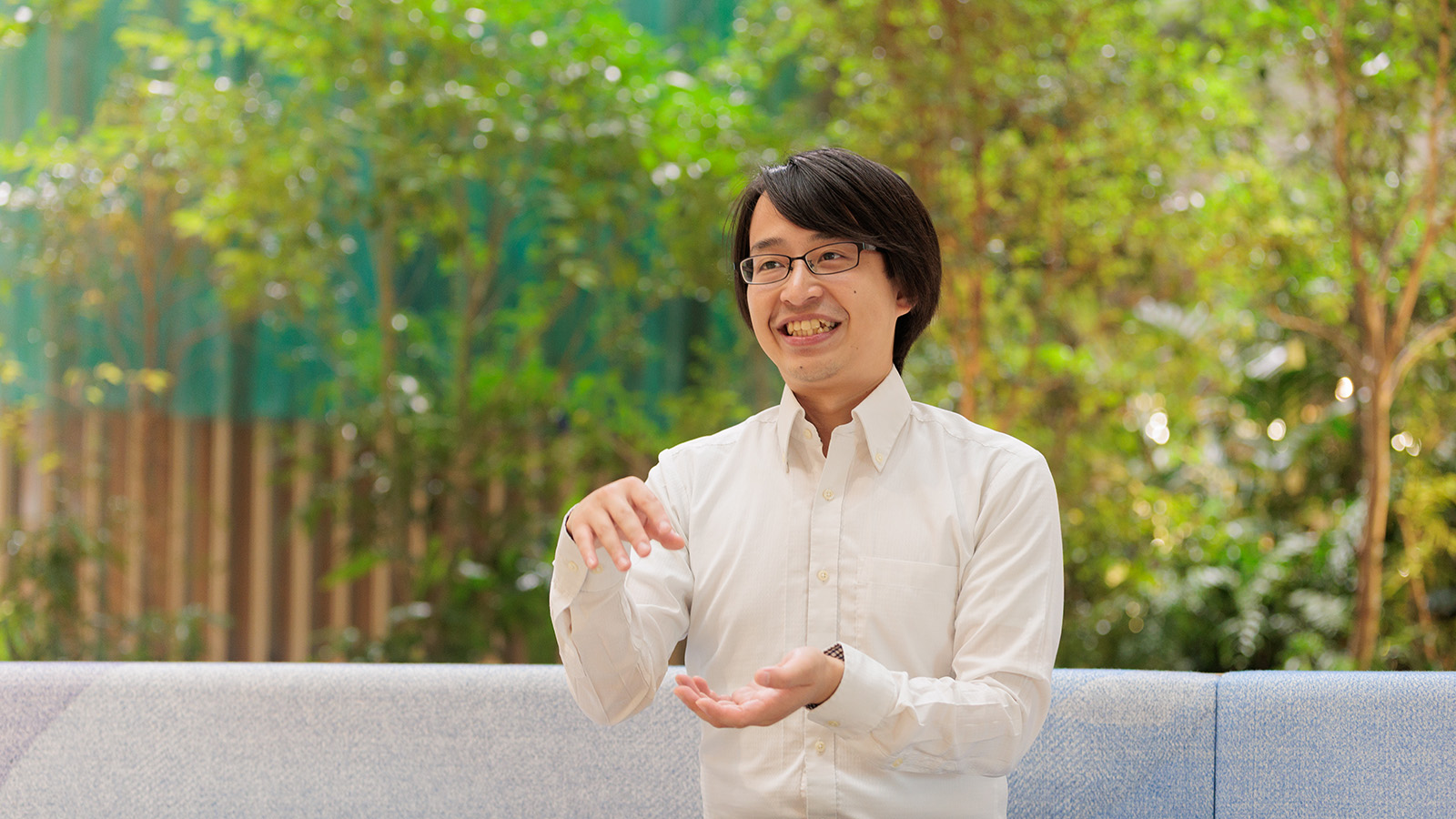
More and more households are buying robotic vacuum cleaners because they effectively lessen the labor of cleaning the home. Panasonic teamed up with real-estate developer Mitsui Fudosan to apply that technology and know-how to developing a commercial-grade robotic vacuum cleaner that can efficiently clean buildings. Named the "RULO Pro," the resulting product has been introduced in multiple facilities beginning with Tokyo Midtown Hibiya. This article pieces together the untold story behind the two years of development that went into creating the RULO Pro, as recounted by those who developed it and those who introduced it.
Summary of this article:
- The building management industry in Japan is faced with a serious shortage of man-power. Because of its physically intensive nature, securing the necessary human resources for cleaning work has been a problem for a while.
- Panasonic and Mitsui Fudosan jointly developed the commercial-grade RULO Pro robotic vacuum cleaner to clean buildings more efficiently. After its debut at Tokyo Midtown Hibiya, the RULO Pro has been introduced elsewhere.
- The untold story behind the two years of development that went into creating the RULO Pro is pieced together with recounts by those who developed it and those who introduced it.
The request was for a robot that would work alongside people, not something fully autonomous
With the labor force shrinking all across Japan, the building management industry is faced with a serious shortage of man-power. The situation is particularly challenging with cleaning work because of its physically intensive nature. In fact, securing the necessary human resources has been a problem for a while. Moreover, with a construction boom underway to have large facilities and hotels ready for the Olympic and Paralympic Games Tokyo 2020, there is plenty of fear that the shortage of cleaning staff will only get worse going forward.
Mitsui Fudosan, who has developed numerous office buildings in downtown Tokyo, was searching for a way to "clean building floors that would retain staff and improve the work environment." The following story recounts how Panasonic took Mitsui Fudosan up on their offer and developed the commercial-grade "RULO Pro" robotic vacuum cleaner.
Video of the commercial-grade "RULO Pro" robotic vacuum cleaner (Japanese)
Shinji Ito of Mitsui Fudosan described the lead-up to joint development with Panasonic as, "We figured the key the current situation lay in to what degree we could take people out of building operations. We had already tried cleaning robots in some buildings on a trial basis, but when we looked at actually putting them into service, things didn't line up in terms of cost and quality. Then, we met with Panasonic who just so happened to be thinking about developing a commercial-grade robotic vacuum cleaner, so we proposed working together. That's how it all started."
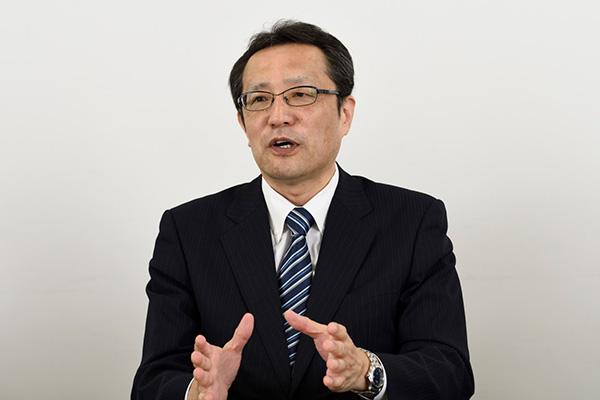
Shinji Ito
Senior Project Manager, Strategy Planning Group, Operation and Management Dept., Office Building Division, Mitsui Fudosan Co., Ltd.
Work started in 2016. At that time, the goal was set on introducing some sort of cleaning robot in Tokyo Midtown Hibiya that was scheduled to open in March 2018. The 35-story building was being designed with a mixture of commercial and office floors. But, just so that there is no misunderstanding, the robot would not be responsible for cleaning all areas. The RULO Pro would only clean the common areas on office floors, but there were valid reasons to specialize how the product would function.
As Mr. Ito explained, "When you hear the word robot, most people imagine something fully automated that autonomously moves from point A to point B. However, what we wanted was something safe and secure for tenants that would ensure good quality cleaning and would be viable in terms of total costs. While the robot would be cleaning the hallways, cleaning staff would tend to exclusive areas like offices, restrooms and lounges. Our objective was to have both staff and robots work efficiently together. For that reason, a simple robot was ideal."
"Problems encountered with other cleaning robots served as the starting point of development," told Masaharu Esaki of Mitsui Fudosan. Eiichi Mitsuishi of Mitsui Fudosan Facilities, who had been more involved with cleaning robots from up close, continued, "Those robots did not clean along walls, so you had to follow them up with manual cleaning. Plus, a lot of time was spent 'tending to the robots,' for example, to empty the dust and dirt they had collected. So, we were wanting to solve those issues."

Masaharu Esaki
Project Leader, Strategy Planning Group, Operation and Management Dept., Office Building Division, Mitsui Fudosan Co., Ltd.
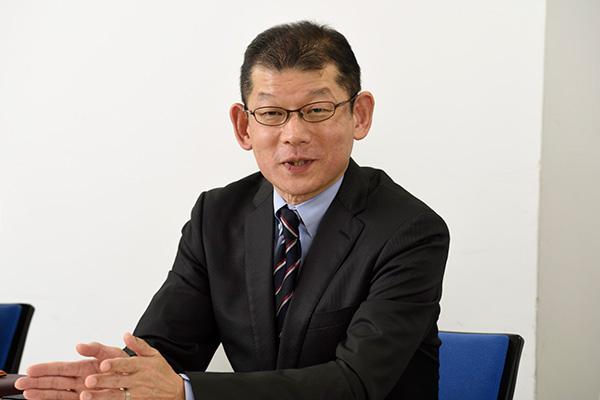
Eiichi Mitsuishi
Leader, Quality Control Sec., Quality Control Dept., Mitsui Fudosan Facilities Co., Ltd.
Development issues were meticulously solved through verifications in a working building
Panasonic already had a long history developing cleaning robots dating back 34 years to 1985. In 1993, they introduced a commercial-grade cleaning robot at Tokyo's Haneda Airport and announced a prototype of what would eventually become the world's first home cleaning robot in 2002. Backed by that engineering know-how, the "RULO" was released in 2015 and, to this day, is highly rated as a "triangular" home cleaning robot that effectively cleans rooms from corner to corner.

MC-RS1-W (white) and MC-RS1-K (black) released in 2015
In other words, not a lot of time had passed from the launch of the RULO when Mitsui Fudosan proposed developing the RULO Pro. As Tamon Tai, who was in charge of development, explained, "We had plans to develop a commercial-grade cleaning robot, but we needed to know what cleaning buildings entailed. Then, with Mitsui Fudosan coming onboard, the project got rolling since they brought the building cleaning know-how."
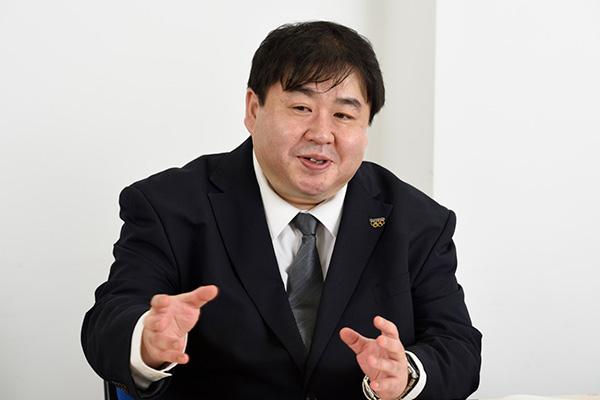
Tamon Tai
Manager, Cleaner Marketing Team, Laundry Systems and Vacuum Cleaner Business Division, Appliances Company, Panasonic Corp.
Luckily, too, a working building managed by Mitsui Fudosan could be used for verification tests. Mr. Tai recounted, "It was a lot harder than expected. This was due in part to it being our first experience, but we went through great pains to pinpoint one by one the causes of what wasn't going right." Chiming in, Mr. Esaki shed some light on what was going on behind the scene, "By doing the test-runs in a functioning building, we would follow the robot to verify whether or not it had cleaned all the way up against the wall and to the end of hallways without missing anything. And, whenever there was an issue, we'd feed it back and come up with a solution for fixing it. We repeated that process over and over."
As a result, a RULO Pro meeting the demanded professional cleaning needs was completed in 2018. It incorporated 4 kinds of sensors - laser, infrared, ultrasonic and contact (bumper) - and proprietary SLAM (Simultaneous Localization And Mapping) technology. This SLAM technology is a prerequisite for robots to move autonomously as it simultaneously estimates and maps the robot's location using sensor information.
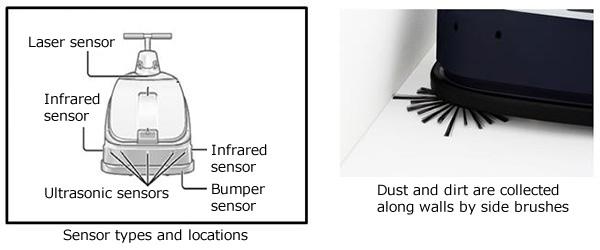
4 kinds of sensors and SLAM technology are used to get close to walls and effectively clean floors
With this technology, cleaning all the way up against the wall is treated as a single concept. SLAM requires detailed map data of the building, but here, too, Mitsui Fudosan provided full cooperation. Before the RULO Pro was introduced, they provided map data of Tokyo Midtown Hibiya that Panasonic used meticulously for mapping. Because these preparations were carefully done in advance, dust and dirt were successfully vacuumed all the way up against the wall.
But, what is featured besides how the robot moves? To that, Mr. Tai responded, "Know-how Panasonic has accumulated through the vacuum cleaner business was used to perform dust collection." In particular, technologies used for home products were applied to the rotating parts of brushes and nozzles. On the other hand, brushes were made of a stronger material and shape demanded for commercial-grade cleaning, while sufficient capacity and capability for cleaning both tiles and carpeting with one machine were ensured.
Speaking about the RULO Pro, Panasonic's Kazuya Oshima said, "We were also very adamant about the 'ease of use' - paper bags for easily disposing of collected dust and dirt, cartridges for quick and easy battery replacement, a handle for carrying, and so forth. These features were added out of consideration for cleaning staff who would actually handle the product. And, besides all of that, Panasonic used the intuition they fostered with consumer appliances to designing the operating controls so that everything would be understood at a glance.
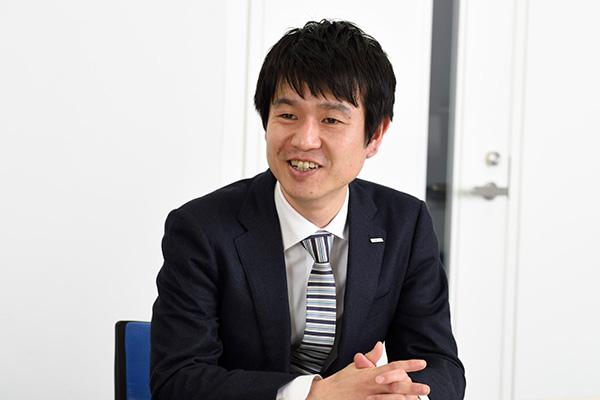
Kazuya Oshima
Project Manager, Corporate & Institutional Sales Coordination Dept., Development Sales Dept. Marketing Div., Eco Solutions Company, Panasonic Corp.
Already liked to the point that "nobody wants to let it go"
Since they were put into service, a total of 6 RULO Pros have been cleaning the common hallways on the 24 office floors at Tokyo Midtown Hibiya. It takes about 75 minutes to vacuum the 250 m2 on each floor. The robots run between 11:00 pm and 7:00 am when very few people are on the building, but because of overtime work and other reasons, the office floors are never fully lifeless. Therefore, the RULO Pro alerts people to be cautious while cleaning, by way of a warning light and audio message that translates roughly as "Cleaning in progress. Watch your step." Efforts have also been put into "safety and security" such as to mount a drive recorder in the robot just in case something bad happens.

RULO Pro at work cleaning the floors at Tokyo Midtown Hibiya
Moreover, good reviews are coming from the worksite as well, as Mr. Mitsuishi tells, "The cleaning staff like it so much they don't want to let it go. Once you give it a shot, you see how useful and effective it is." Tatsuo Todoroki of the same project team added, "Because it cleans so much by itself, it's a big help." The RULO Pro also has LTE communication capabilities so that it can send a text message to staff when cleaning is done. In the meantime, staff can focus on cleaning the exclusive areas, so the RULO Pro beautifully clears the initial target of people and robots working efficiently together.
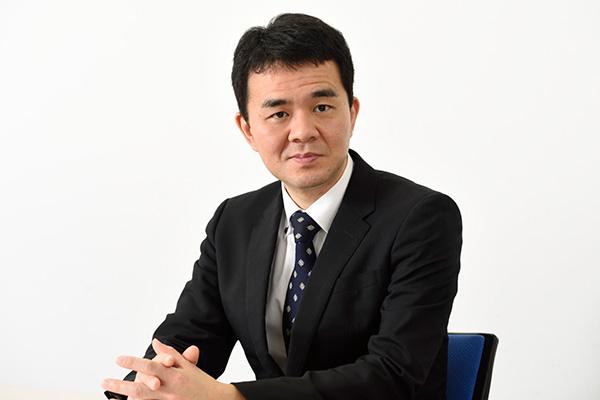
Tatsuo Todoroki
Mitsui Fudosan Facilities Co., Ltd.
"Not only have our tenants gotten used to it, but the fact that there have been no complaints also proves that the robot is cleaning the way it should," tells Mr. Ito. The success at Tokyo Midtown Hibiya has inspired other new landmarks in downtown Tokyo like the Nihonbashi Takashimaya Mitsui Building (completed June 2018) and the Nihonbashi Muromachi Mitsui Tower (completed March 31, 2019) to adopt the RULO Pro.
Mr. Esaki described the project by saying "The sensors, dust collection and other technologies condensed into the RULO Pro are a mélange of proprietary technologies Panasonic already had. They show you just how broad and potent their technological prowess is."
Looking back, Mr. Ito commented, "At the very beginning when we requested results in two years-time, I was thinking that our mission was rather difficult. But, being located in Higashiomi, Shiga Prefecture, Mr. Tai always showed up at periodic meetings with solutions to problems. The speed at which he worked amazed me."
"Cleaning work is analog in many ways and is not meant to be completely mechanized. There are many situations that should be handled by people. Going forward, we want to provide office space where the fusion between people and robots make things easier to do."
Born from teamwork, the RULO Pro began B-to-B sales in July 2018 and, according to Mr. Tai, the inquiries have been piling in. The way things are going, the RULO Pro will likely become the de facto standard in commercial-grade robotic vacuum clears. That will be interesting to see.
- Reproduced from the website "Mirai-kotohajime", by courtesy of Nikkei Business Publications, Inc.
# # #
- Disclaimer:
- We would like to note that Panasonic Newsroom is not a place to address personal Customer Service issues. Even though this is not the forum, Panasonic is always eager to resolve your concerns. Our local customer services contacts can be found at Global Support or you can see our list of Social Media Accounts to find the right channel for your queries and concerns.
Related Links
Related News
- The First-Ever "Head Car Scuffing Machine" for the Shinkansen Bullet Train: Dexterous Force Control Replicated by "Japan's Engineering Prowess" (Apr 03, 2019)
- What Is the AI Supporting the First Step? The Reasons for the Birth of the Passenger Boarding Bridge Automated Docking System (Part 2 of 2) (Mar 15, 2019)
- What Is the AI Supporting the First Step? The Reasons for the Birth of the Passenger Boarding Bridge Automated Docking System (Part 1 of 2) (Mar 15, 2019)
- The Launch of a New Era of Stadium Solutions with Electronic Ticketing (Dec 07, 2018)
- Dairy Cattle Births Are Protected by Cameras - Revolutionizing Dairy Farming (Sep 18, 2018)



